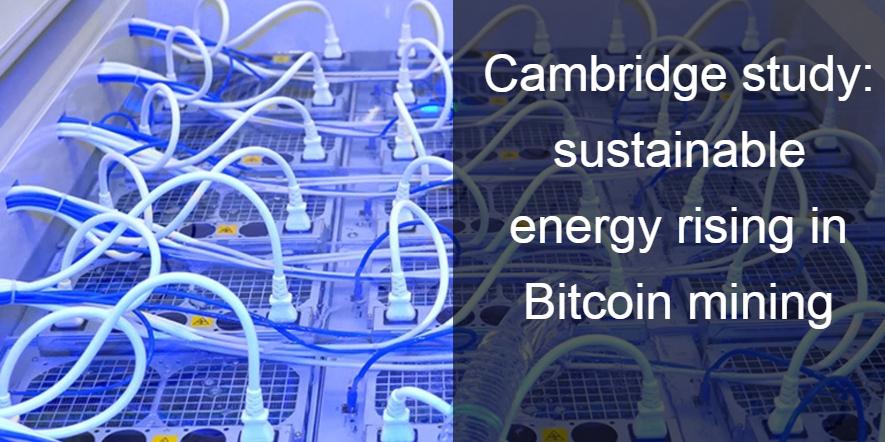
The use of sustainable energy sources for Bitcoin mining has grown to 52.4%, while natural gas has replaced coal as the single largest energy source, finds a new study by the Cambridge Centre for Alternative Finance (CCAF) at Cambridge Judge Business School.
The ‘Cambridge Digital Mining Industry Report’ says the 52.4% use of sustainable energy sources for Bitcoin mining, which includes 9.8% nuclear and 42.6% renewables such as hydropower and wind, compares to a 2022 estimate of 37.6% overall sustainable energy use. The report issued last month, also finds that natural gas, at 38.2% (up from 25.0% in 2022), has replaced coal (now 8.9%, down from 36.6% in 2022) as the single largest energy source used in Bitcoin mining.
Based on the reported data, which represents 48% of global mining activity, the study estimates Bitcoin’s annual electricity consumption at 138 TWh (terawatt-hours), or about 0.5% of global consumption, and corresponding network-wide emissions at 39.8 MtCO2e (megatonns of carbon dioxide equivalent). The data further highlights the crucial role North America plays in the digital mining industry, with the US at 75.4% of total reported Bitcoin mining activity followed by Canada at 7.1%.
Report is based on practitioner insight from Bitcoin operations in 23 countries
The findings are based on a comprehensive survey conducted by the CCAF involving 49 digital mining firms, of which 41% are publicly listed. The participating companies had headquarters in 16 different jurisdictions, with operations spanning 23 countries. The lead author of the ‘Cambridge Digital Mining Industry Report’ is Alexander Neumueller, Research Lead, Digital Assets Energy and Climate Impact at the CCAF.
This report directly addresses a persistent data gap by relying on direct practitioner insights rather than abstractions. By offering a granular perspective based on data covering nearly half the global mining activity, we aim to anchor the debate on robust, transparent evidence and inform grounded policy discussions about this rapidly evolving industry.Alexander Neumueller, Research Lead, Digital Assets Energy and Climate Impact, Cambridge Centre for Alternative Finance
Key takeaways
- Mining hardware efficiency continues to improve
- Rising electricity consumption
- Electricity costs dominate cash-based expenses of digital mining firms
- Concentration of mining activity in North America, with activity in the US booming
- Notable move towards sustainable energy
- GHG emissions estimates highly depend on methodology
- Evidence of digital mining firms serving as flexible load
- Hardware market highly oligopolistic, firmware market more fragmented
- New insights on hardware lifecycle – recycling and secondary use play a major role
- Energy prices and regulatory uncertainty top miner concerns
- Miner projections on BTC price showed to be conservative, their hashrate forecasts turned out to be slightly too optimistic
- The future of digital mining

